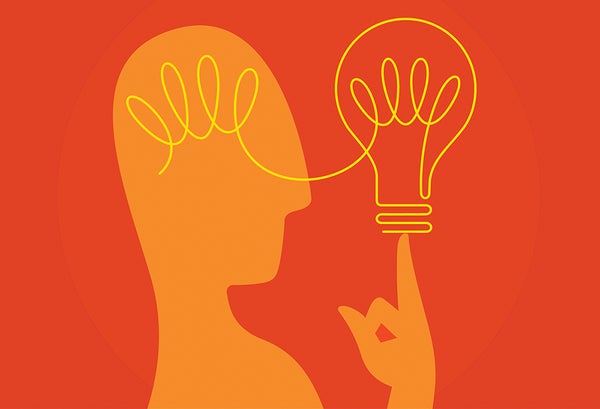November 10, 2025
2 min read
Researchers spot the “tipping point” before mathematicians’ moments of discovery
By Matthew Hutson edited by Sarah Lewin Frasier

Thomas Fuchs
Join Our Community of Science Lovers!
If you want to know when mathematicians are about to have a breakthrough, you don’t need to look inside their heads. Just watch their movements at a chalkbo…
November 10, 2025
2 min read
Researchers spot the “tipping point” before mathematicians’ moments of discovery
By Matthew Hutson edited by Sarah Lewin Frasier

Thomas Fuchs
Join Our Community of Science Lovers!
If you want to know when mathematicians are about to have a breakthrough, you don’t need to look inside their heads. Just watch their movements at a chalkboard.
“I’ve always been super intrigued by this tension between how abstract and conceptual mathematics is, on the one hand, and then just how physical the actual activity of mathematics is,” says Tyler Marghetis, a cognitive scientist at the University of California, Merced. He wondered whether he could use the “manual labor” of math to deduce what was happening in someone’s mind. In a recent study in the Proceedings of the National Academy of Sciences USA, Marghetis and his co-authors borrowed theoretical tools from other fields to show it’s possible.
Complex systems sometimes abruptly change state. It can happen when metals become magnetic, when algae overtake a pond or when a horse goes from a walk to a trot. Often a period of instability precedes the tipping point. Some neuroimaging suggests that such a change also happens in the process of insight—when the brain is stuck in a rut, wobbles and then finds the right track. This study illustrates that process at work.
On supporting science journalism
If you’re enjoying this article, consider supporting our award-winning journalism by subscribing. By purchasing a subscription you are helping to ensure the future of impactful stories about the discoveries and ideas shaping our world today.
The researchers recorded six mathematicians at chalkboards as they each spent about 40 minutes working on two math proofs and thinking aloud. Observers made a note each time a solver shifted attention to other parts of the board by writing, erasing or pointing at equations, diagrams, or other inscriptions. In this way, the mathematician and chalkboard together acted as what cognitive scientists would call one extended and semiobservable mind. The researchers also recorded exclamations of insight (“I see!”). By analyzing the data, they found that the places attention shifted to became significantly more unpredictable in the two minutes before a eureka moment. It’s unclear where that unpredictability originated: Either a bubbling idea led solvers to connect puzzle pieces across the board, or solvers had grown frustrated and decided to physically forage for new connections, which sparked a solution. Perhaps it was a mixture of both.
“I think it’s a fun paper,” says Santa Fe Institute physicist and mathematician Cristopher Moore, who studies complex systems and was not involved in the study. “I only wish it helped me figure out how to have more insights,” he adds with a laugh. He’d like to see the study’s statistical approach combined with deep interviews “to build up a rich corpus of what mathematicians were thinking at the time.”
Georgetown University psychologist Shadab Tabatabaeian, the paper’s lead author, imagines a “cool application” of their method: someday computer interfaces that track mouse or eye movements might know when not to disturb someone on the brink of a breakthrough or when to toss a new idea their way.
It’s Time to Stand Up for Science
If you enjoyed this article, I’d like to ask for your support. Scientific American has served as an advocate for science and industry for 180 years, and right now may be the most critical moment in that two-century history.
I’ve been a Scientific American subscriber since I was 12 years old, and it helped shape the way I look at the world. SciAm always educates and delights me, and inspires a sense of awe for our vast, beautiful universe. I hope it does that for you, too.
If you subscribe to Scientific American, you help ensure that our coverage is centered on meaningful research and discovery; that we have the resources to report on the decisions that threaten labs across the U.S.; and that we support both budding and working scientists at a time when the value of science itself too often goes unrecognized.
In return, you get essential news, captivating podcasts, brilliant infographics, can’t-miss newsletters, must-watch videos, challenging games, and the science world’s best writing and reporting. You can even gift someone a subscription.
There has never been a more important time for us to stand up and show why science matters. I hope you’ll support us in that mission.